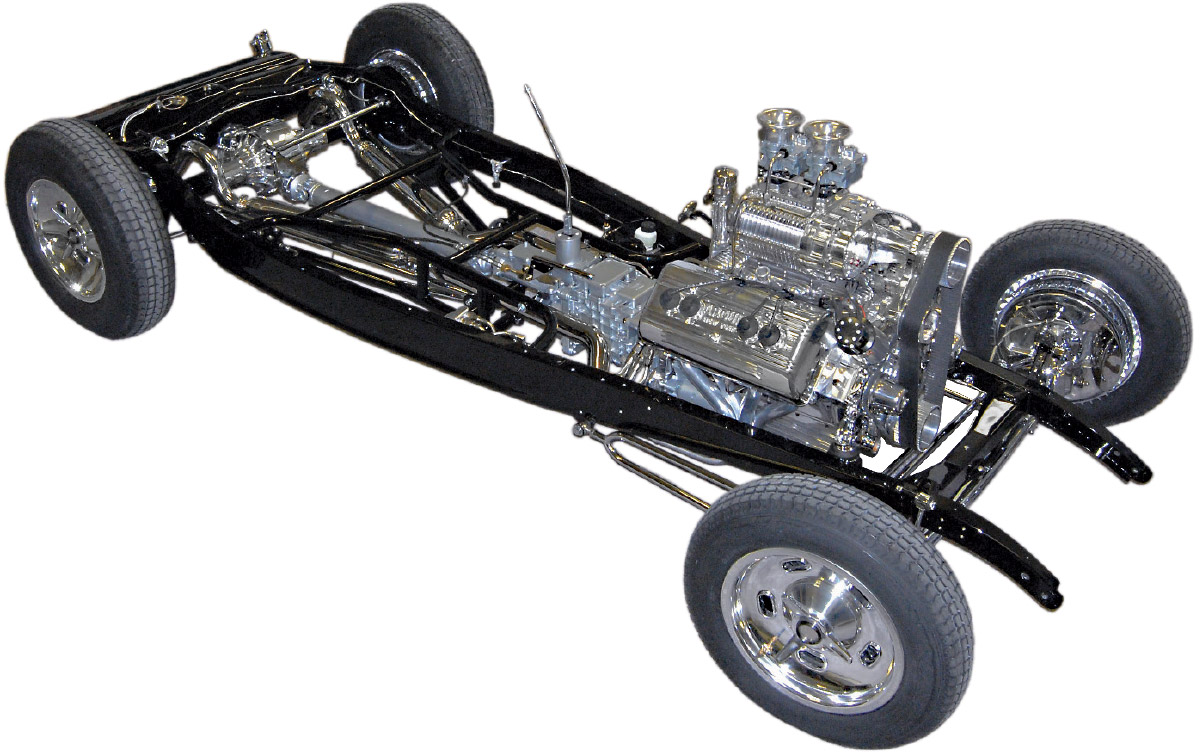

 Photography by THE AUTHOR
Photography by THE AUTHORord cars, in general, are not what one thinks of when arriving at the Waldorf Astoria in New York City in 1947. Visions of Duesenbergs, Cadillacs, and Packards come to mind. But, this ’32 Ford three-window coupe is not a chip off the old block. Think of Zora and Elfi Duntov doing just that in this car. They were an upscale and flamboyant pair who scandalized the New York social register with their style and flare for fun. This was about the time that Zora’s overhead valve conversion for the Ford Flathead motor was introduced.
Jeff Chandler, of Rancho Santa Fe, California, got together with designer David Brost from Steve’s Auto Restorations (SAR) in Portland, Oregon, to make a hot rod that would stand up to the best Detroit had to offer. In that vein of thinking, a goal was created to emulate that style, flare, and cohesive design theme that the Duntov projected in his lifetime. A car that not only was a sum of its parts, but one that was built to replicate a period of time.
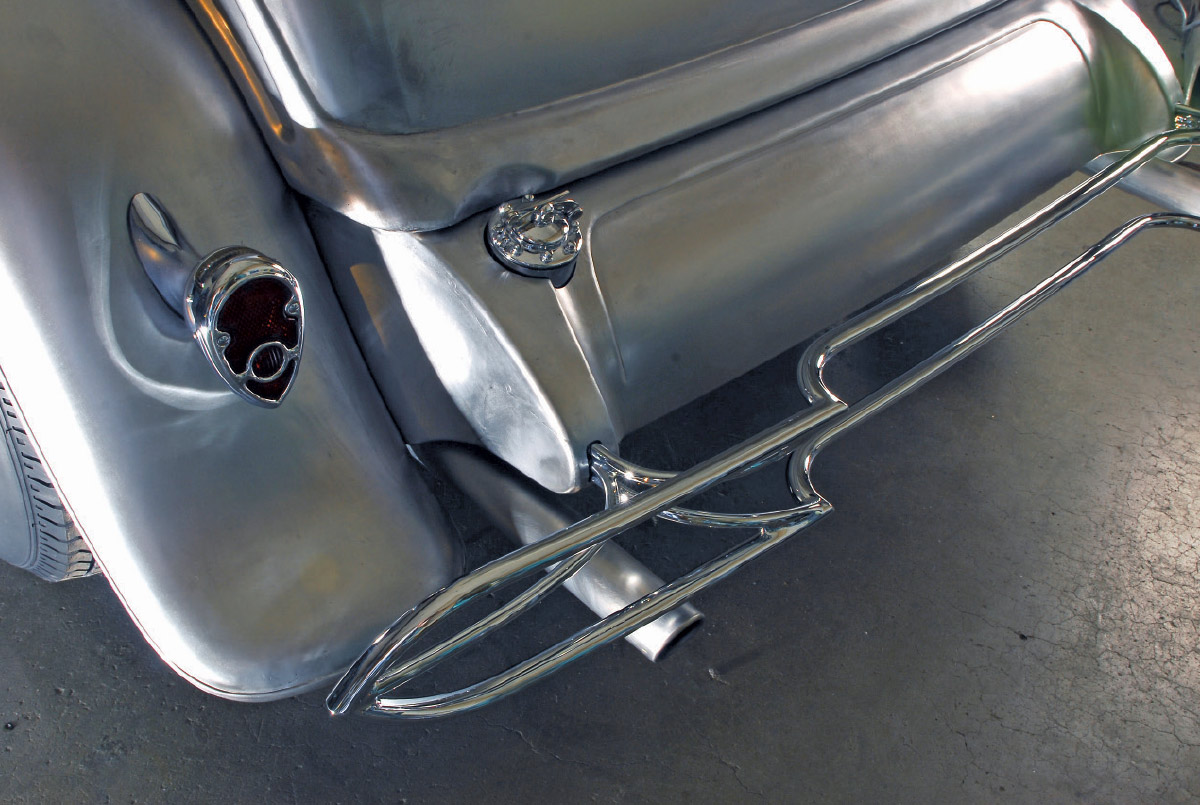
Don Ferguson built the aluminum-based Ford ARDUN Flathead block. It is a thing of beauty and topped with an S.C.o.T. blower and intake manifold. The icing on the cake are two Rochester 2GC carburetors. What brings the Flathead to life is the Joe Hunt magneto and from here the power is transferred back to the TREMEC TKO 600 five-speed transmission. A Winters quick-change filled with Dutchman axles handles the power. Next up the exhaust is routed through a stainless steel system by SAR with Stainless Specialties mufflers. Real Rodders wheels in 15×5.5 and 16×7 and Coker/Excelsior Comp V in 500-15 and 700-16 tires make this chassis a roller.
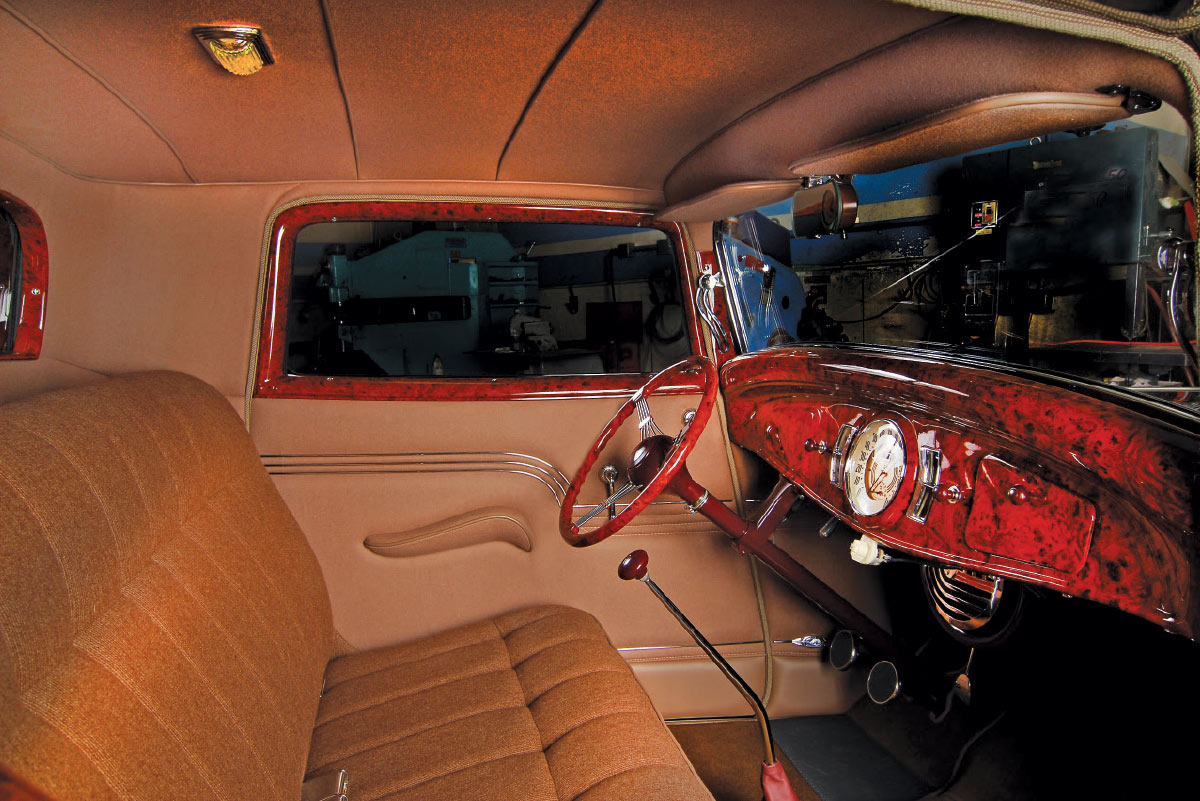
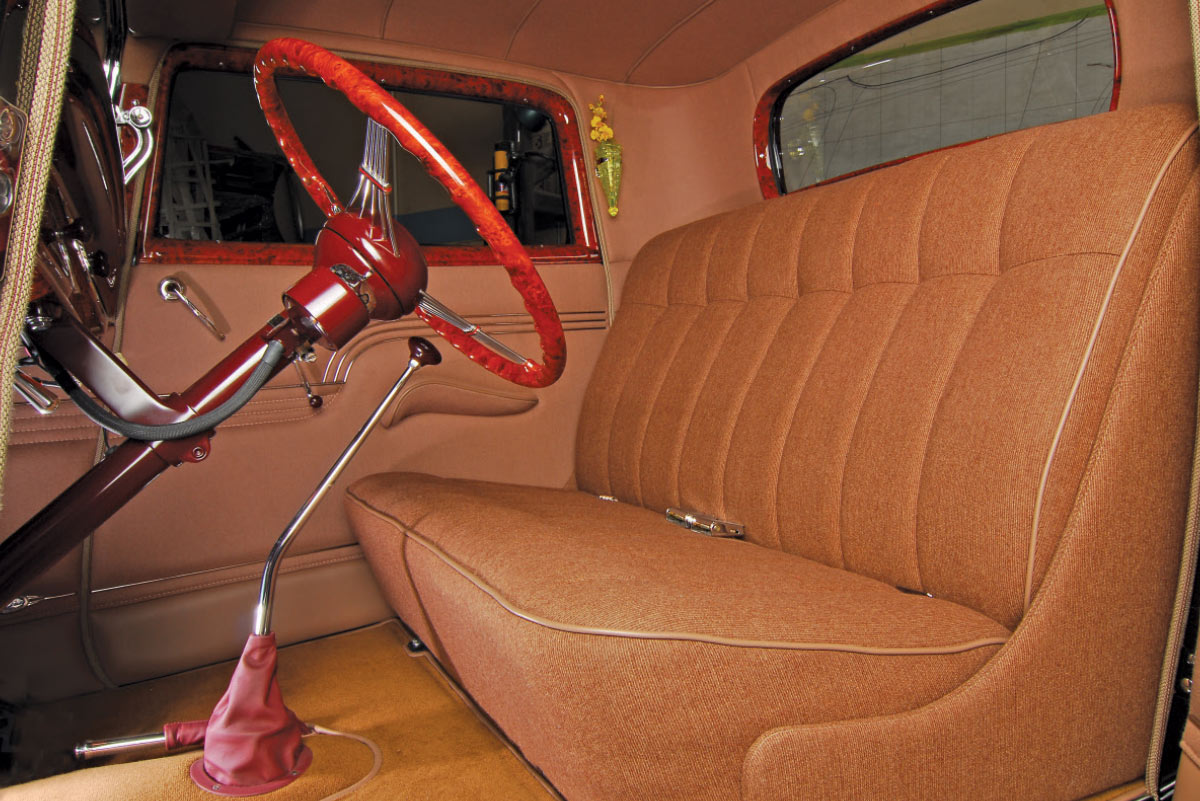
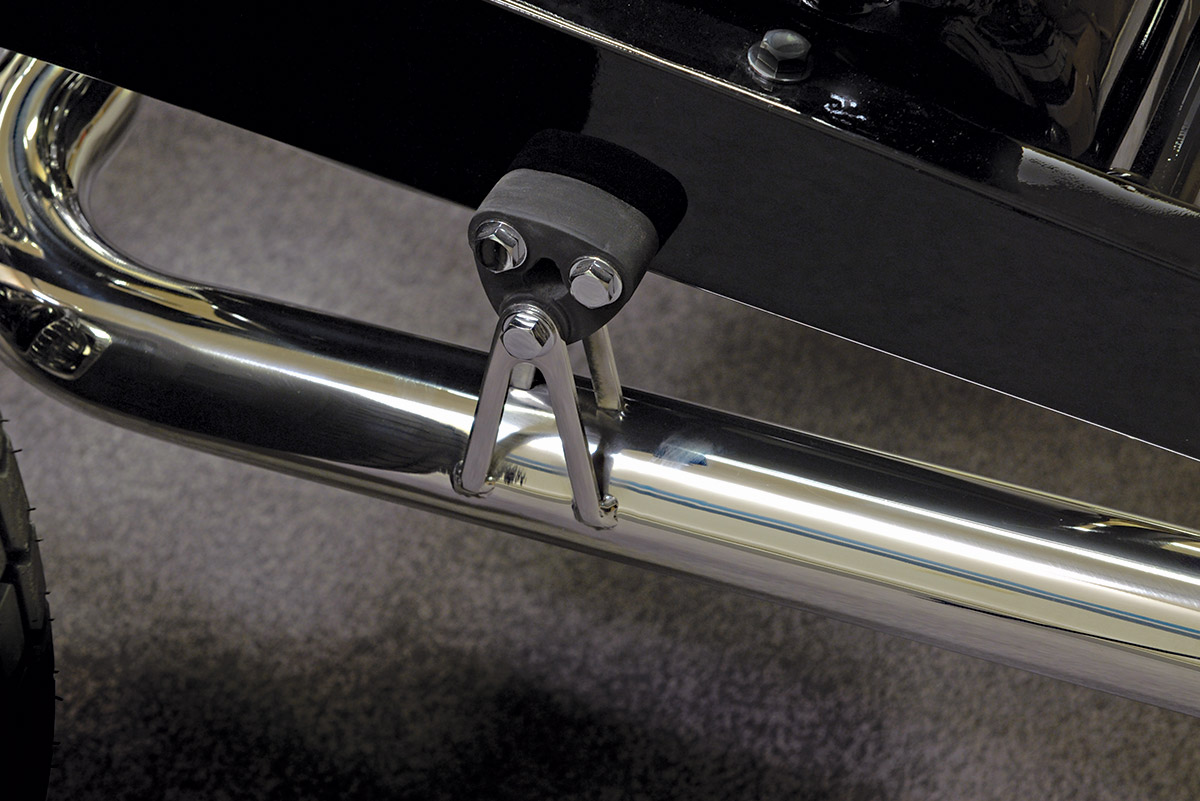
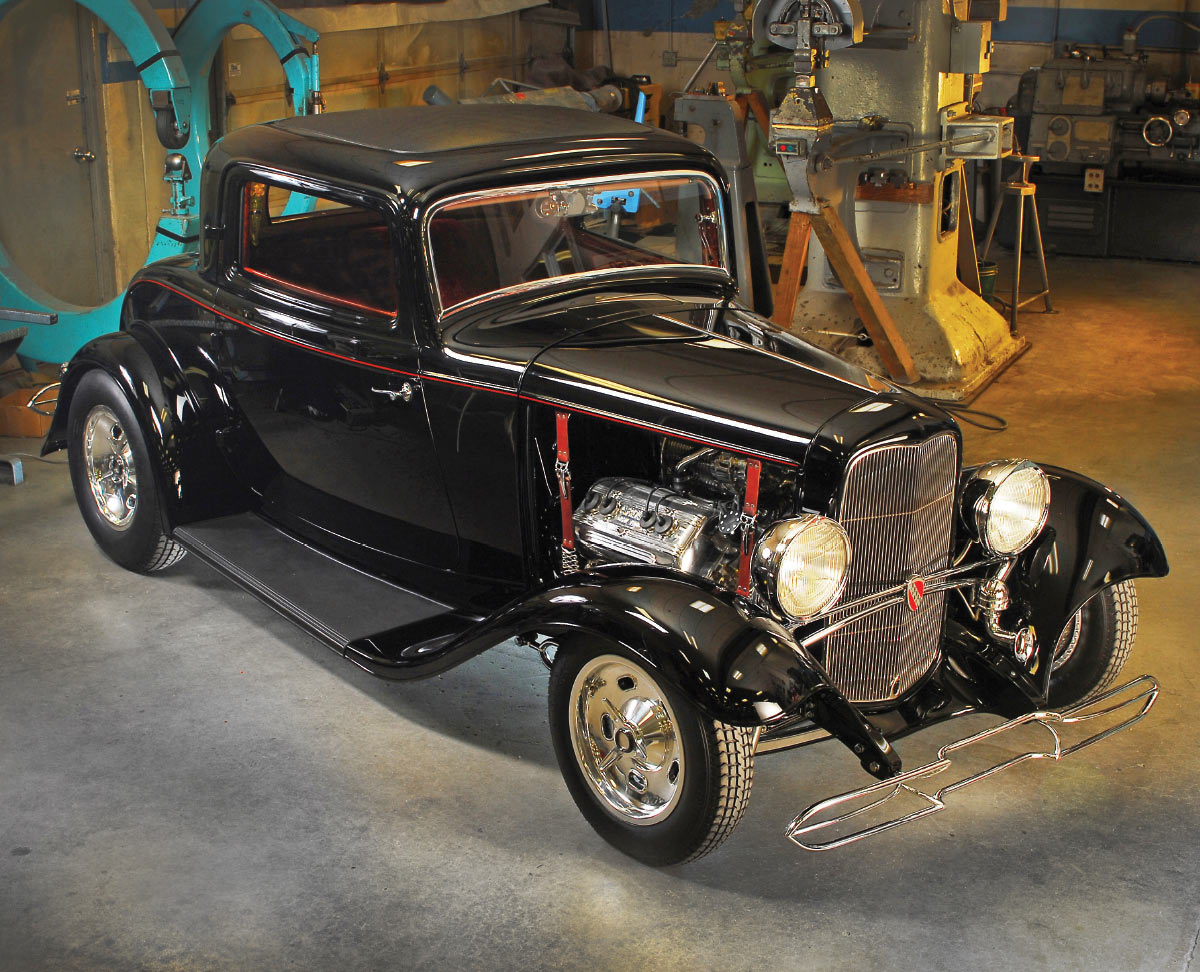
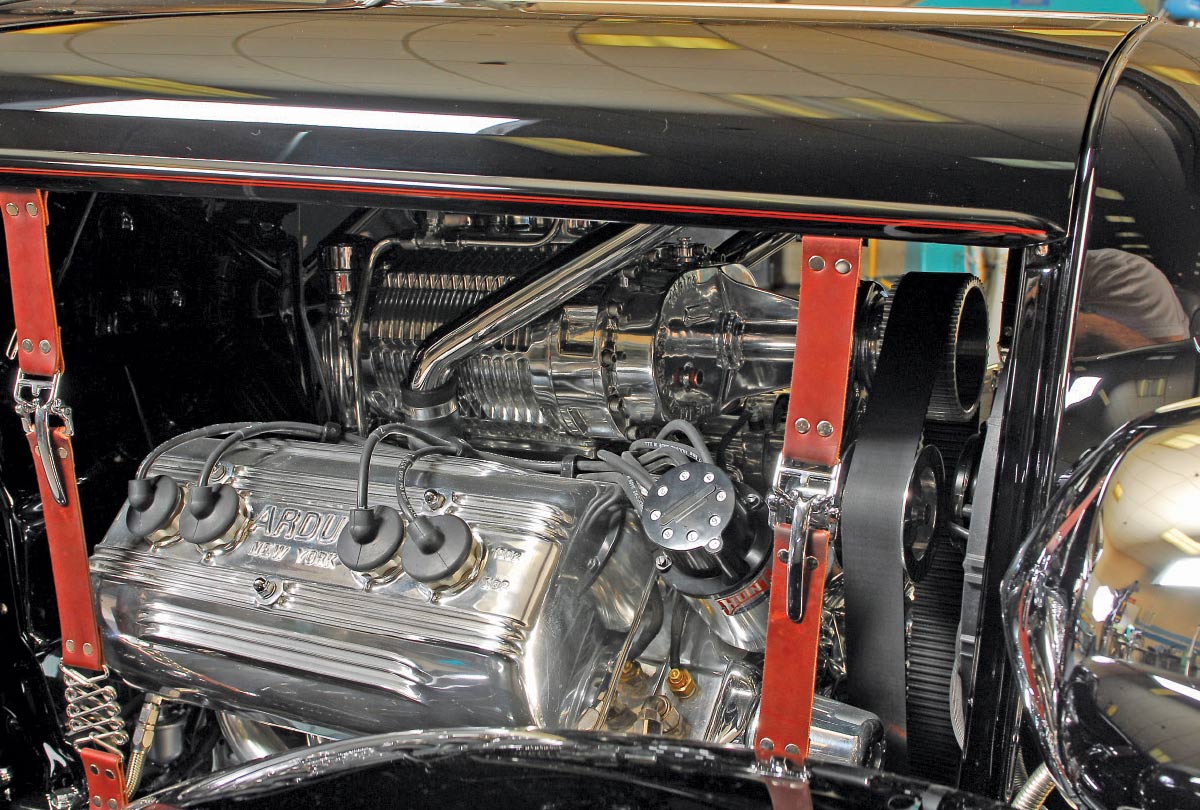

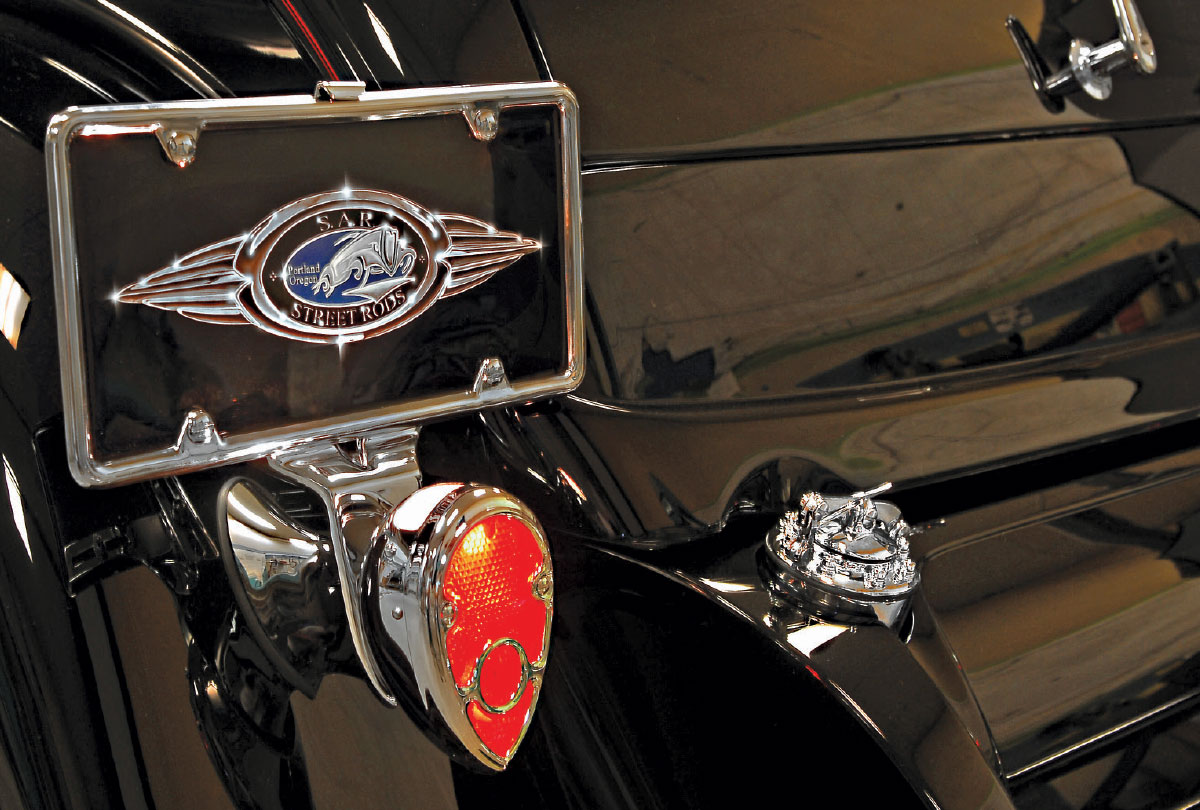
The interior flows with the overall design concept and invites you to enter an artistic time where no expense was spared on coach-built cars. The ’32 Ford dash, window moldings, and the Juliano’s steering wheel are woodgrained to the highest of standards. The dash is fitted with a ’36 Oldsmobile gauge cluster restored with modern electronics by Classic Instruments. The Packard-inspired stainless steel door panel trim is a stroke of genius in following the overall goal. A ’36 Ford clock mirror was fitted along with a working vintage Hadees accessory hot water heater. Bringing all of the hot rod’s electrics to life is an American Autowire Highway 22 Plus acquired and installed by SAR. The headliner and door panels are done in tan English wool Broadcloth, giving an elegant background for the art deco dome light. Glide Engineering was chosen to supply the original-style seat. Elegance is inspired by the interior swathed in voiture classique tolle a’ sac (translation: classic car sackcloth bagging) by Cedardale Upholstery in Mount Vernon, Washington.
Historic Fords are not usually associated with the aforementioned marques of the era. The design and execution of this one takes umbrage with that thought and proves that design can make or break a project. Look closely because you may never see one like Jeff Chandler’s Ford three-window coupe again.
